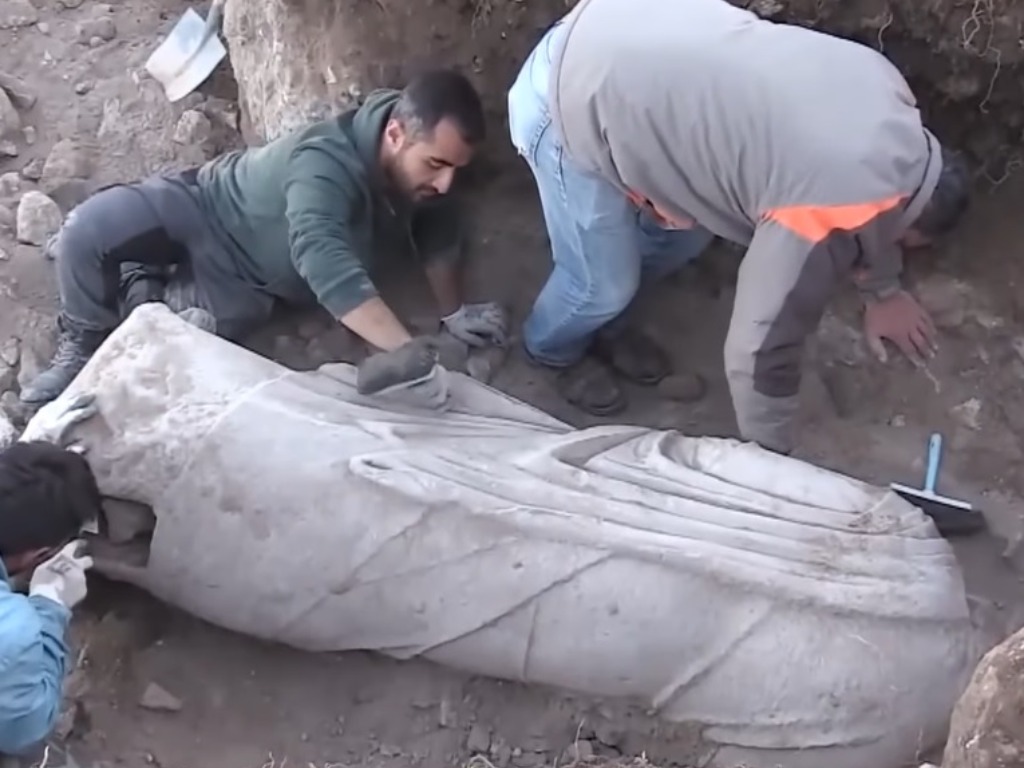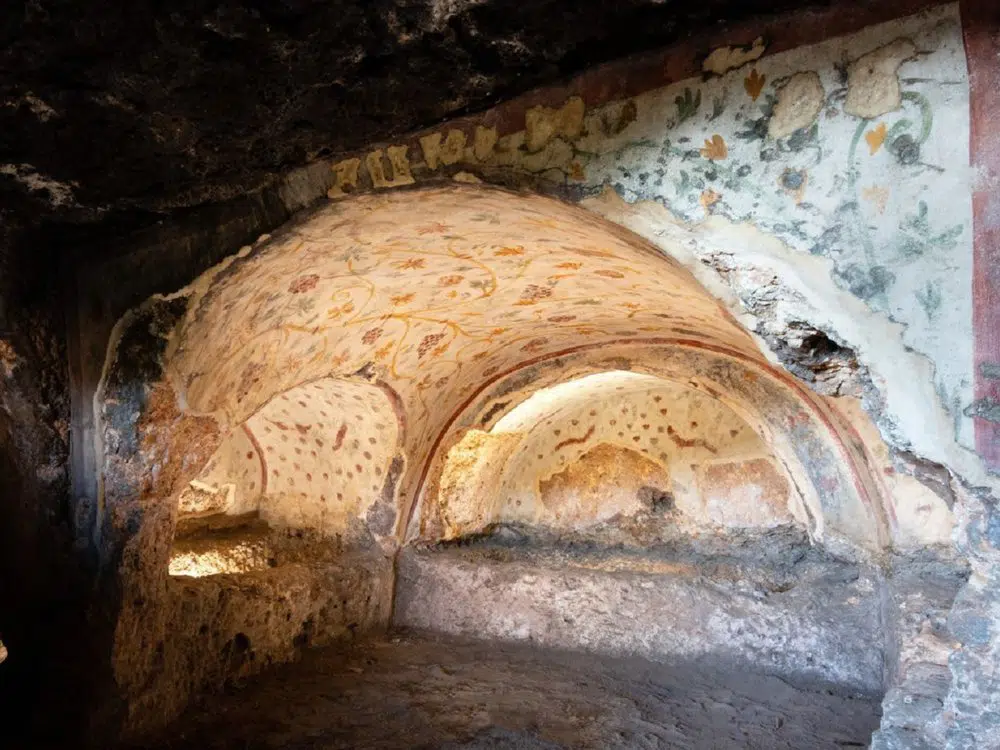
Archaeologists excavating the site of the Hellenic-era city of Blaundos in western Turkey recently discovered two 2000-year-old statues. The announcement of the discovery was made on December 18 by the Turkish news agency Anadolu.
Blaundos was first settled by Macedonians who came to Asia Minor in what is now Turkey, following the military campaign of Alexander the Great. The ancient city, located in what is now the province of Usak, later became a Roman city. Its world-famous rock-cut tombs have intrigued archaeologists — and unfortunately, grave looters — for centuries.
Systematic archaeological excavations at the site of the city, which began in 2018, are now focused on the area of a temple dedicated to the Greek mythological goddess Demeter.
2000-year-old statues only latest of many treasures found at Blaundos
Birol Can, an archaeologist who teaches at Usak University, announced on Wednesday that his team had discovered two 2000-year-old statues in the courtyard of the temple, which is located in the center of the city in an interview with Turkey’s Anadolu Agency.
Can stated that one of the statues, which was missing its head, measured 185 centimeters (over 6 feet) tall; the other statue, which is also without a head, is also missing its right arm and both legs.
“Both finds are male marble statues. We have not yet determined who they are — whether they are gods, emperors, or statesmen,” he noted. He then stated “We don’t know yet whether the statues are from the temple site or from street-side honor statues,” adding that further research on the spectacular finds will be undertaken.

The city was located strategically atop a hill, with nearly 365-degree views of the surrounding countryside, which would have made it extremely difficult to take by force.
Although known to the outside world as far back as 150 years ago, there had not been any official research at the site until 2018, when archaeologists who were part of the Blaundos Archaeological Excavation Project began their work.
The Daily Sabah reports that the team has now found temples, a theater, a public bath, aqueducts, a public building, a stadium and other buildings in the ancient city.
Oil lamps lit in rock-cut tombs to commemorate the dead
“Apart from these, we know that there are many religious, public and civil structures still under the ground,” noted expedition leader Birol Can, in an interview earlier in 2021.
“There are arched sarcophagi carved into the bedrock in front of the walls of each room. Apart from these, places that are thought to be used for funeral ceremonies were also found inside the rock tombs. The main door of the tombs was closed with a marble door and reopened during burial or ceremony times in the past.”
Still, however, the tombs are a treasure trove for archaeologists and historians, who have found pottery and coins dating back to the second century AD as well as mirrors, rings, cups and even oil lamps, which may have been lit — much like in the catacombs outside Rome, with many oil lamps lit there as a way to commemorate the dead.
See all the latest news from Greece and the world at Greekreporter.com. Contact our newsroom to report an update or send your story, photos and videos. Follow GR on Google News and subscribe here to our daily email!



